

Deceptive patterns: what can designers learn from Amazon getting sued?
source link: https://uxdesign.cc/deceptive-patterns-what-can-designers-learn-from-amazon-getting-sued-c6516aca7af0
Go to the source link to view the article. You can view the picture content, updated content and better typesetting reading experience. If the link is broken, please click the button below to view the snapshot at that time.
Deceptive patterns: what can designers learn from Amazon getting sued?
The consequences of manipulating users with deceptive patterns
Imagine that you’re happily browsing an online store, casually searching for that perfect item, when out of the blue, a pop-up window shows up, begging you to sign up for a premium subscription. You’re not interested, but the “No thanks” button is cleverly camouflaged in minuscule print, while the “Sign me up!” button beams like a radiant sun. Voila! You’ve just encountered a classic deceptive pattern.
Deceptive patterns are the cunning tricks employed by companies to manipulate our thoughts and actions. They cunningly play with our psychology, subtly pushing us to do something we never really intended to do, or stopping us from finding what we’re really looking for. Crafty, isn’t it?
The allegations against Amazon
Now, let’s talk about the recent showdown between the Federal Trade Commission (FTC) and the e-commerce giant, Amazon. The FTC has slapped Amazon with a lawsuit, accusing the company of duping millions of customers into signing up for its Prime subscription service through deceptive user interface designs.
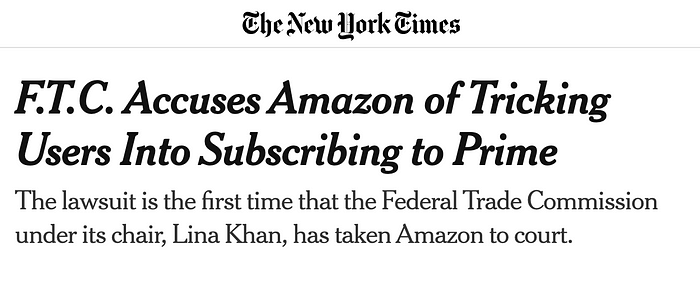
But the lawsuit goes even deeper. Amazon allegedly made canceling subscriptions an odyssey, with a purposefully complicated “labyrinthine” process designed to distract and prevent customers from abandoning the paid service.
This user flow outlined by Kaity Nelson showcases the multitude of steps that it takes to cancel an Amazon Prime membership. Kudos to you if you even made it to the end without giving up.
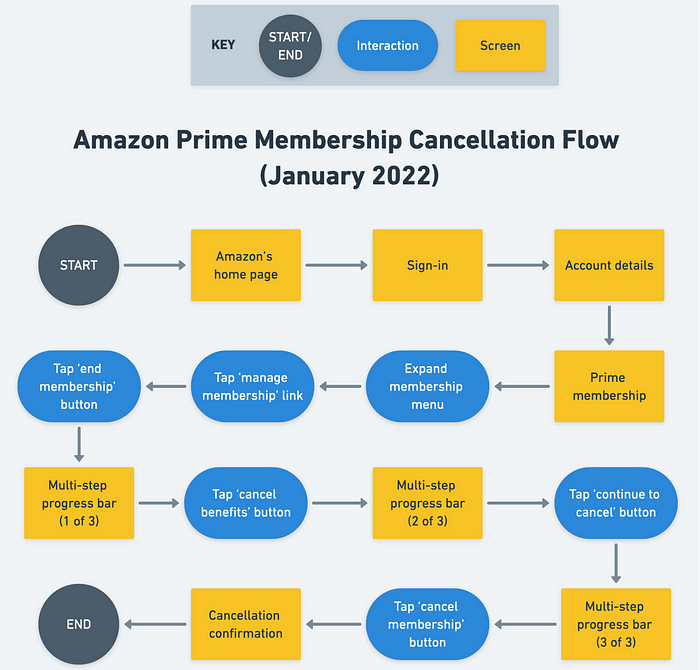
Consequences for consumers
Why does all this trickery matter, you may ask? Well, let’s dive into the consequences that unsuspecting consumers face.
First and foremost, it hits us where it hurts the most — our wallets. Unwanted subscriptions translate into hard-earned money vanishing into thin air.
And that’s not all. It’s the emotional toll that cuts deep.
We feel betrayed, and deceived, and begin questioning our own judgment and the trust we once placed in these companies. But this isn’t the first time encountering antitrust issues involving Big Tech companies.
Imagine spending what feels like an eternity trying to cancel a subscription because the “cancel” button is buried beneath layers of confusion and misleading options.
It’s infuriating, time-consuming, and frustrating beyond belief. That time could have been spent binge-watching your favorite shows or accomplishing something meaningful. But alas, it’s swallowed by the labyrinthine design.
Consequences for businesses
Now, let’s look at the other end of the stick and examine how these deceptive patterns affect the companies themselves. These giant corporations are made out to be the villain, and rightfully so in some cases.
When the truth comes out, as it inevitably does, the repercussions are seismic. Legal troubles abound, tarnishing their reputation and eroding consumer trust like a sandcastle crumbling under the relentless waves.
Think about it. If a company deceives you once, will you trust them again? Probably not. Customer loyalty plummets, and that’s a bitter pill for any business to swallow.
Moreover, the repercussions extend to their bottom line, as disgruntled customers seek refuge with their competitors and the FTC comes for their bank account.
How to approach ethical design
This FTC lawsuit against Amazon serves as a superhero’s call to action. It’s a resounding wake-up call, a beacon of light signaling the end of the deceptive pattern era. It sets a powerful precedent for other companies that may be contemplating the same dubious practices.
FTC Chair Lina Khan, a fierce advocate for consumer rights, shines a radiant spotlight on these nefarious tactics, demanding transparency and ethical design from corporations.
By prioritizing ethical interface design, companies can foster trust, transparency, and consumer empowerment.
Similar to the CAN-SPAM Act, which emphasizes clear opt-out options and functioning unsubscribe mechanisms in emails, companies offering paid subscription services must empower users to take control of their choices.
Let’s explore the significance of this approach.
Clear opt-out options
Every user deserves the freedom to opt out of any service or subscription without hassle. Ethical interface design ensures that companies prominently display clear opt-out options, allowing users to make their decisions freely. Transparency in presenting these choices builds trust and fosters a sense of control over their digital experiences.
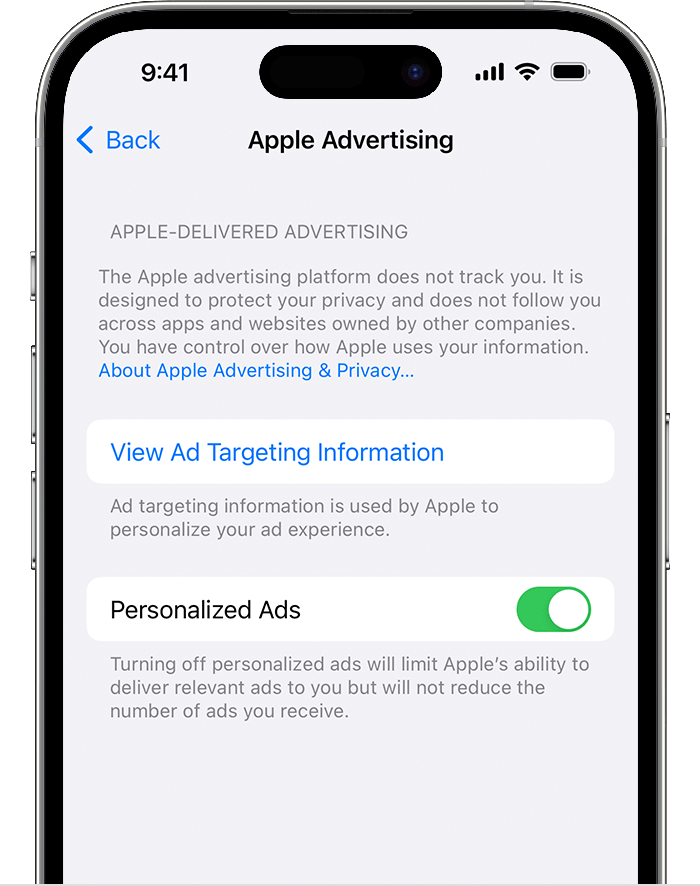
Functioning unsubscribe options
Just as we appreciate the ability to unsubscribe effortlessly from email lists, the same should apply to paid services. Companies should make the unsubscribe process straightforward and hassle-free, without burdening users with convoluted steps or hidden barriers. By enabling users to discontinue subscriptions easily, companies honor their autonomy and respect their decisions.
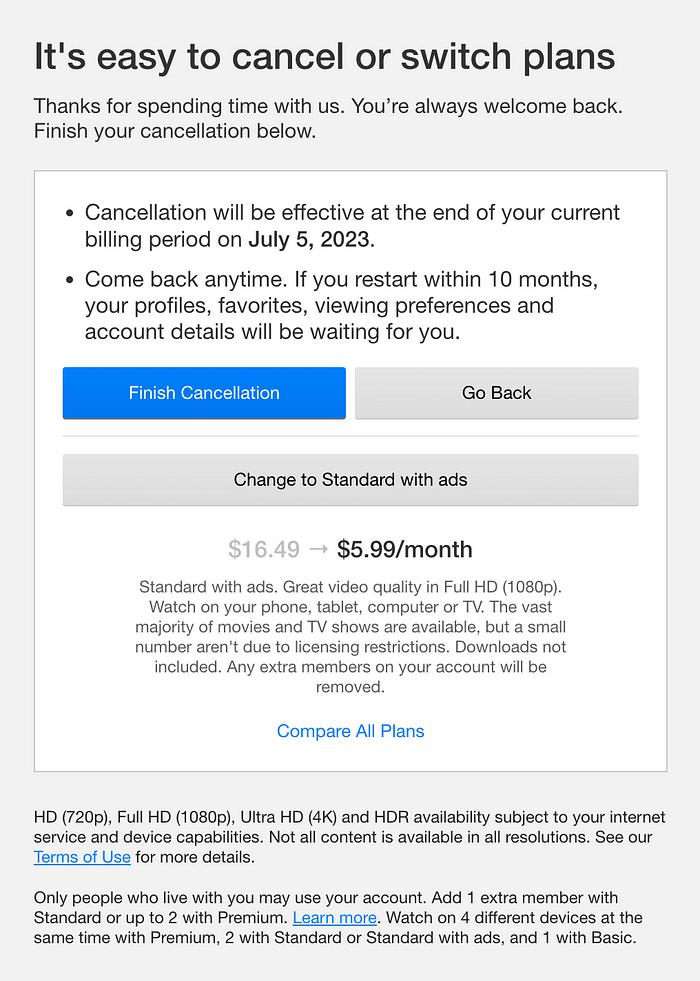
Transparent communication
In the spirit of empathy and transparency, regular communication becomes crucial. Companies should keep users informed about subscription details, changes, and upcoming renewals. By proactively sharing information, users are empowered to make well-informed decisions about their continued participation, enhancing the trust between companies and consumers.
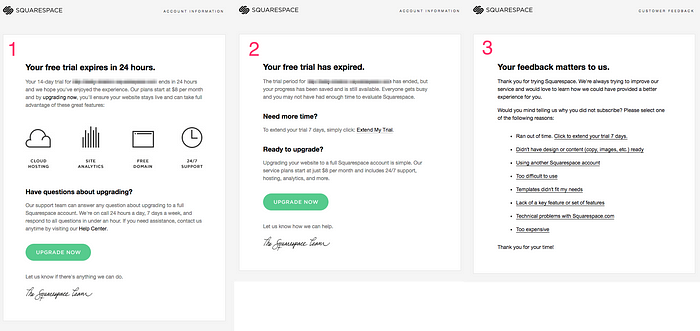
Final thoughts
The recent lawsuit filed by the FTC against Amazon serves as a powerful reminder for companies to reevaluate their practices and prioritize the empowerment of consumers.
As we move forward, let’s pave a path where ethical interface design becomes the norm, and users can navigate the digital world with confidence and trust.
Together, we can create a digital landscape where users feel empowered, respected, and free from the clutches of deceptive practices. It’s a journey that demands empathy, understanding, and a commitment to putting consumers first.
Recommend
About Joyk
Aggregate valuable and interesting links.
Joyk means Joy of geeK